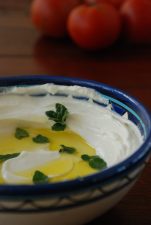 This Imperial Eagle is one of several species in Turkey that face extinction.
This Imperial Eagle is one of several species in Turkey that face extinction.
Birds accustomed to breeding and rearing their young in healthy wetlands are being pushed out as lakes dry up and agricultural and industrial activity take precedence. And reptiles. And mammals.
Even humans are being displaced as accelerated drought and fire sweep through Israel, rain floods Brisbane, Australia, and snow suffocates the UK and North America. In the last thirty years, 1/3 of all species have already gone extinct. And according to a Professor of Biology Ankara’s Hacettepe University, 70% of Turkey’s birds may be heading down the same devastating path.According to Mr. İlhami Kiziroğlu, who also heads the University’s Environmental Education and Bird Research Center, roughly 502 bird species have been observed in Turkey.
Of those, only 437 are observed regularly, while the others are either migratory species or difficult to spot. Mr. Kiziroğlu estimates that in the past twenty years, many species have lost fifty percent of their populations while others may have lost as much as seventy five percent.
The Oriental Darter that used to breed near Lake Amik in Hatay, which dried up in the 1960s, have not been seen since. They’ve disappeared. While bred in captivity by the Environment and Forestry Ministry, the Bald Ibis has not been seen in Turkey’s wild since 1988, World Bulletin News reports.
The White-headed Duck was displaced by industrial waste near Lake Burdur in the country’s Mediterranean region, and raptor birds, such as the majestic Imperial Eagle, are also at risk.
Migratory, mountain, island, wetland, Arctic, Antarctic and seabirds are expected to suffer most from the effects of climate change, according to the World Wildlife Fund (WWF) since they have a narrow environmental range. Birds that can survive in a variety of conditions will be more resilient as weather patterns continue to alter their habitat.
Birds are not the only species vulnerable to extinction. The International Union for the Conservation of Nature (IUCN) announced that up to 35% of birds, 52% of amphibians, and 71% of reef-building corals have traits that are likely to make them particularly susceptible to climate change.
Although extinction continues despite expanded protection, species have responded favorably to conservation efforts that now deserve to be redoubled.
More on bird conservation efforts in the Middle East:
Birds Help Jordan, Israel, And Palestine Flock Together
Iran And Qatar Make Bio-lateral Ties For Birds
Dubai Is For The Birds (And The People Who Love Them)
Image via es.treknature



